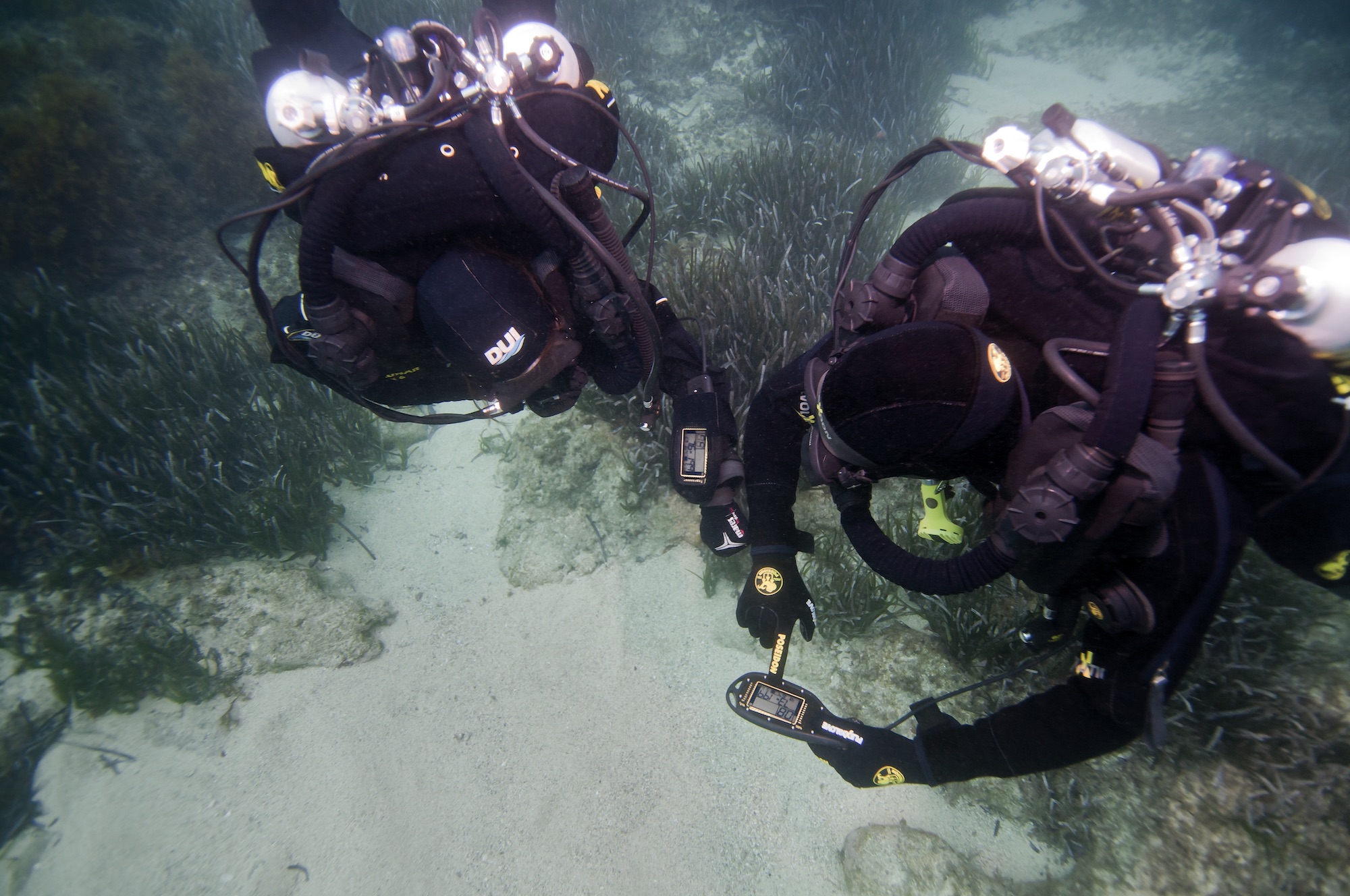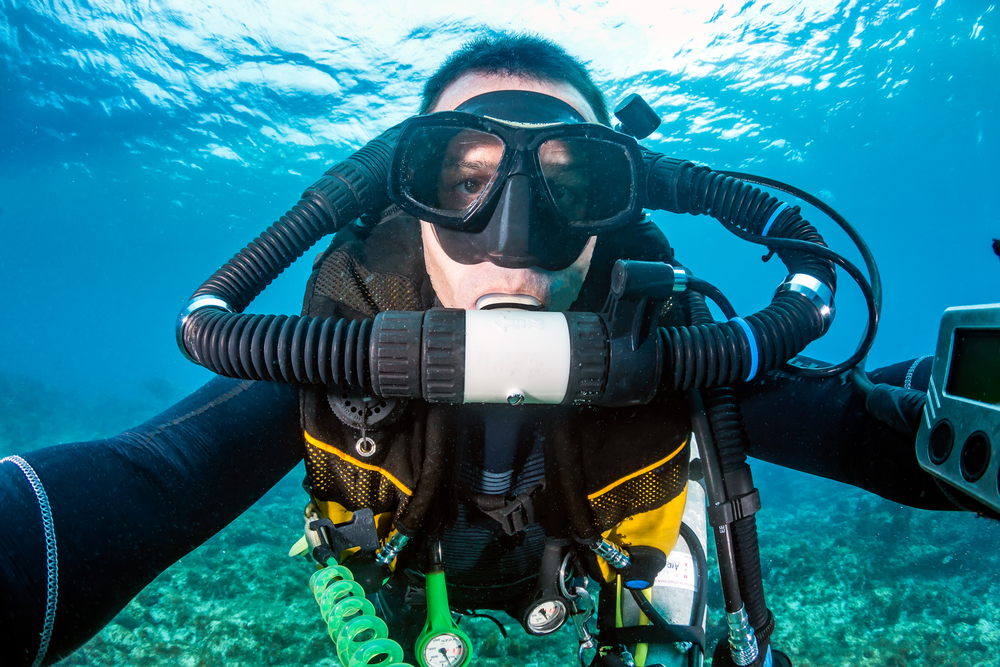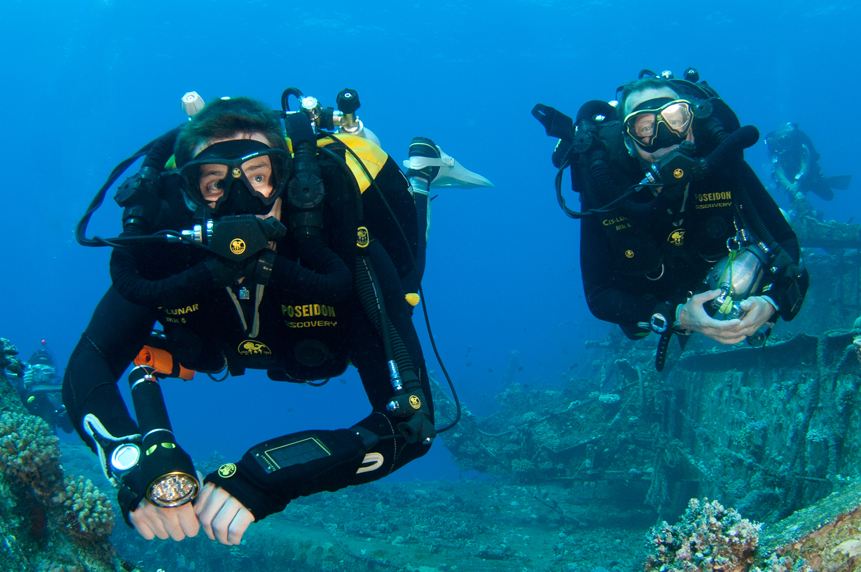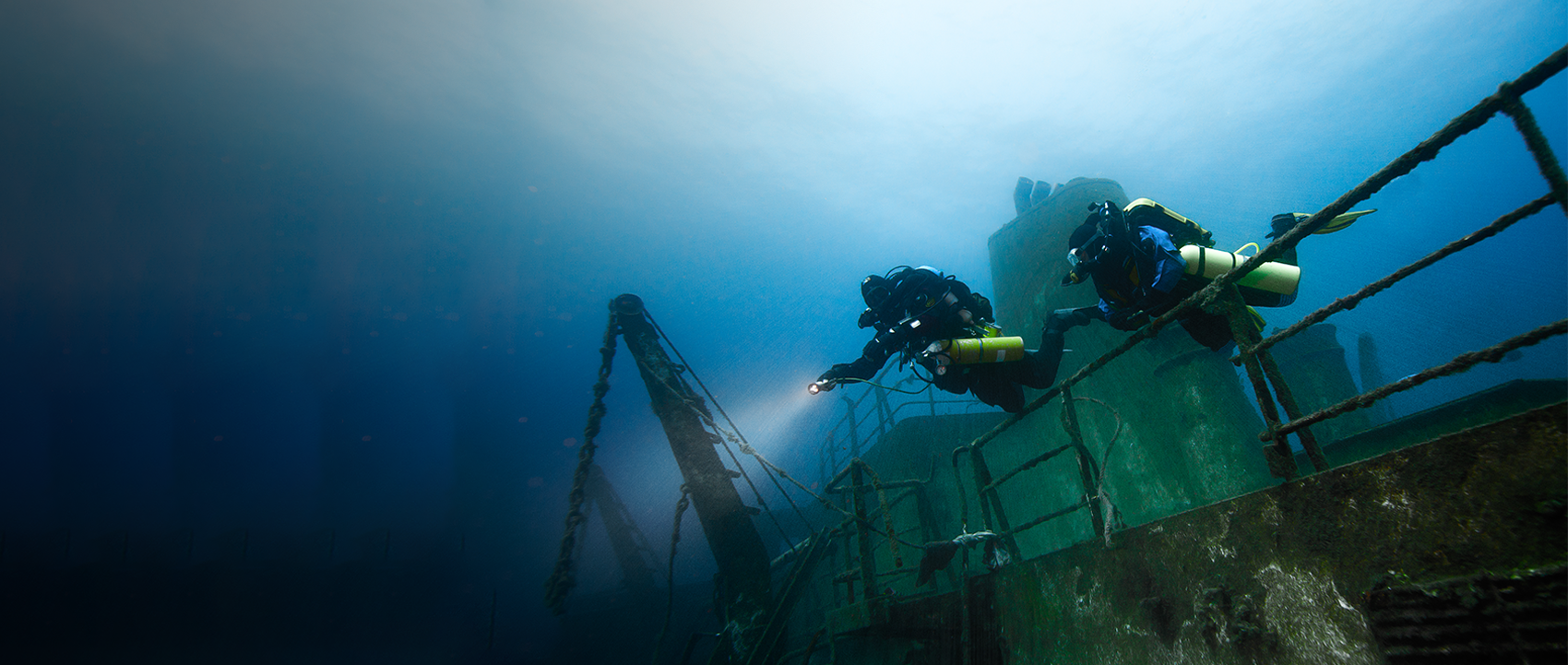When you first take the plunge on your PADI Open Water Diver course, it can take a few dives to get the hang of using scuba gear. But, it soon becomes second nature. At that point, you likely start getting curious about how to expand your diving horizons. One way to do this is to try different types of dive gear. If you’ve ever wondered what it’s like to dive on a rebreather vs. other scuba gear, read on!
Rebreather diving offers very different ways to explore the underwater world versus a standard scuba set-up. Each one has advantages and disadvantages, so understanding both is essential before deciding which one’s best for you. Let’s compare the ease of use, dive time limits, cost, and other key factors of rebreather vs. standard scuba diving.
But first, we will look at what exactly a rebreather is.

What is Rebreather Diving?
The air you exhale still usually contains between 15% and 17% oxygen (versus the 21% oxygen in the air in a standard scuba tank). With a standard scuba regulator, you expel your exhaled breath into the water as bubbles. This is what we call an open-circuit regulator.
A closed circuit rebreather, on the other hand, works by taking the air you exhale and passing it through a recycling system before you rebreathe it. Therefore, it stays within a closed loop so you generally don’t exhale any of your gas into the water. In that loop the gas isscrubbed of CO2, analyzed by the onboard sensors to ensure there is a high enough percentage of oxygen remaining, and if not, more O2 is added, and then it’s recirculated for you to breathe. This rebreathing of your available gas allows you to remain underwater for longer dives without needing to surface to refill your air supply. You’re essentially “re-breathing” your own air instead of exhaling your bubbles, so another advantage of this type of diving is that it can be very quiet and stealthy.
Rebreather diving is a much more advanced form of diving than scuba, requiring special training. You must be proficient in using the equipment and gas mixtures before attempting a dive with a rebreather.
Let’s take a look at the pros and cons of rebreather vs. standard scuba diving.

Rebreather vs. Standard Scuba
Ease of Use. Rebreathers require training specific to each rebreather unit. In addition, they also necessitate a more intensive pre-dive setup and post-dive maintenance than a standard scuba diving regulator. With scuba, you can walk into pretty much any dive shop, rent gear and be underwater within a few minutes. Dive Time Limits. Rebreathers give you the optimum gas mixture for your depth, which means you likely will enjoy longer bottom times. Plus, you’ll stay warmer and hydrated longer as you’re not losing heat and moisture through exhaled air. Potential for Exploration. The potential for exploration increases with a rebreather. By recycling your breathing gas and giving you the perfect mixture at every depth, you can go much deeper and explore further on a single dive than you could with scuba. This makes rebreathers ideal for exploring caves, large wrecks, or other sites that may be deep or require long dive times. Cost. Rebreather units are significantly more expensive than a standard scuba setup, and you need to factor in the training and maintenance costs when investing as well. On the other hand, they make some types of tech diving cheaper, as they optimize the use of gas. Proximity to Marine Life. Here, the clear winner is the rebreather. The lack of bubbles and noise means you can get much closer to marine life without startling it. This makes for some truly magical underwater encounters.
And the Winner is…
It really does depend on what you want from your dive!
If you’re an underwater photographer, simply want more intimate animal encounters or need longer dives, a rebreather could be right for you. Bear in mind, though, that rebreather diving has a higher entry cost and is best suited to more disciplined divers.
On the other hand, if you’re more of a spontaneous diver and want the freedom to drop by a shop, pick up a tank and jump straight in with your buddy, then scuba diving is for you. It does come with limited depth and dive time, but sometimes that’s all you need.

One thing’s for sure, if you haven’t already, it’s definitely worth trying a rebreather at least once. You can book a Discover Rebreather experience at your local PADI Dive Shop to give it a try without committing to buying a rebreather.
learn more about padi rebreather courses
Share This
